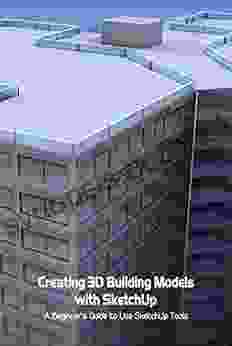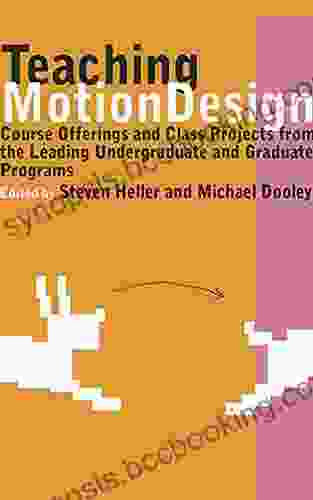The Ultimate Beginner's Guide to Using SketchUp Tools

Sketchup is a powerful 3D modeling software that can be used for a variety of purposes, from architecture to product design. It is a popular choice for beginners because it is easy to learn and use, and it can produce high-quality results.
This guide will teach you the basics of using SketchUp, including how to create and edit 3D models, add materials and textures, and create realistic renderings. By the end of this guide, you will have a solid foundation in SketchUp and be able to create your own 3D models.
4.7 out of 5
| Language | : | English |
| File size | : | 29957 KB |
| Text-to-Speech | : | Enabled |
| Screen Reader | : | Supported |
| Enhanced typesetting | : | Enabled |
| Print length | : | 70 pages |
| Lending | : | Enabled |
Getting Started with SketchUp
The first step to using SketchUp is to download and install the software. You can download SketchUp from the SketchUp website.
Once you have installed SketchUp, you can launch the software and create a new model. To create a new model, click on the "File" menu and select "New".
The SketchUp interface is divided into four main areas: the model view, the tool palette, the component browser, and the inspector.
The model view is where you will create and edit your 3D models. The tool palette contains all of the tools that you need to create and edit models, such as the line tool, the circle tool, and the push/pull tool. The component browser contains a library of pre-made components that you can use in your models, such as doors, windows, and furniture.
The inspector allows you to view and edit the properties of objects in your model, such as their size, color, and texture.
Creating and Editing 3D Models
To create a new 3D model, start by drawing a line or circle in the model view. You can then use the push/pull tool to extrude the line or circle into a 3D shape.
To edit a 3D model, select the object that you want to edit and use the tools in the tool palette to make changes. You can use the scale tool to resize the object, the rotate tool to rotate the object, or the move tool to move the object.
You can also use the component browser to add components to your models. To add a component, simply drag and drop the component from the component browser into the model view.
Adding Materials and Textures
Once you have created a 3D model, you can add materials and textures to make it more realistic. To add a material, select the object that you want to apply the material to and click on the "Materials" tab in the inspector. In the materials tab, you can choose from a variety of materials, such as wood, metal, and glass.
To add a texture, select the object that you want to apply the texture to and click on the "Textures" tab in the inspector. In the textures tab, you can choose from a variety of textures, such as wood grain, metal, and fabric.
Creating Realistic Renderings
Once you have added materials and textures to your model, you can create a realistic rendering of the model. To create a rendering, click on the "Render" menu and select "Render".
The render settings will allow you to control the quality of the rendering. You can choose the resolution of the rendering, the number of samples per pixel, and the lighting conditions.
Once you have chosen the render settings, click on the "Render" button to start the rendering process. The rendering process may take several minutes, depending on the size and complexity of the model.
This guide has provided you with the basics of using SketchUp. You can now use SketchUp to create your own 3D models, add materials and textures, and create realistic renderings.
If you want to learn more about SketchUp, there are a number of resources available online. You can find tutorials, articles, and forums where you can get help and advice from other SketchUp users.
With a little practice, you will be able to use SketchUp to create amazing 3D models.
4.7 out of 5
| Language | : | English |
| File size | : | 29957 KB |
| Text-to-Speech | : | Enabled |
| Screen Reader | : | Supported |
| Enhanced typesetting | : | Enabled |
| Print length | : | 70 pages |
| Lending | : | Enabled |
Do you want to contribute by writing guest posts on this blog?
Please contact us and send us a resume of previous articles that you have written.
 Book
Book Novel
Novel Page
Page Chapter
Chapter Text
Text Story
Story Genre
Genre Reader
Reader Library
Library Paperback
Paperback E-book
E-book Magazine
Magazine Newspaper
Newspaper Paragraph
Paragraph Sentence
Sentence Bookmark
Bookmark Shelf
Shelf Glossary
Glossary Bibliography
Bibliography Foreword
Foreword Preface
Preface Synopsis
Synopsis Annotation
Annotation Footnote
Footnote Manuscript
Manuscript Scroll
Scroll Codex
Codex Tome
Tome Bestseller
Bestseller Classics
Classics Library card
Library card Narrative
Narrative Biography
Biography Autobiography
Autobiography Memoir
Memoir Reference
Reference Encyclopedia
Encyclopedia Jez Cajiao
Jez Cajiao Robert J Mrazek
Robert J Mrazek George Mahood
George Mahood Eddie Armer
Eddie Armer Denise Lewis Patrick
Denise Lewis Patrick Liz Rosenberg
Liz Rosenberg Gary Richter Dvm
Gary Richter Dvm Jodi Bombardier
Jodi Bombardier Robin Ha
Robin Ha George Berkowski
George Berkowski Gary Leland
Gary Leland Ghada Karmi
Ghada Karmi John Geweke
John Geweke George L Wybenga
George L Wybenga Eva Van Loon
Eva Van Loon Harold Evensky
Harold Evensky Gertrude Crampton
Gertrude Crampton George Seldes
George Seldes Francesca Simon
Francesca Simon Dem Mikhailov
Dem Mikhailov
Light bulbAdvertise smarter! Our strategic ad space ensures maximum exposure. Reserve your spot today!
 Nick TurnerFollow ·14.7k
Nick TurnerFollow ·14.7k Brayden ReedFollow ·9.8k
Brayden ReedFollow ·9.8k Joseph HellerFollow ·6.5k
Joseph HellerFollow ·6.5k Asher BellFollow ·3.3k
Asher BellFollow ·3.3k Cruz SimmonsFollow ·9.8k
Cruz SimmonsFollow ·9.8k Al FosterFollow ·9.2k
Al FosterFollow ·9.2k Jacques BellFollow ·12.5k
Jacques BellFollow ·12.5k Emmett MitchellFollow ·2.4k
Emmett MitchellFollow ·2.4k

 Robert Heinlein
Robert HeinleinUnveiling Humanism in China and the West: A Journey...
In our rapidly...

 Brian Bell
Brian BellBlind Boy's Unwavering Struggle Against Abuse and the...
In the tapestry of...

 Craig Carter
Craig CarterBuilding Wealth While Working for Uncle Sam: The Ultimate...
## ### Are you a federal employee who wants...

 Raymond Parker
Raymond ParkerUnveiling the Secrets of Arabic Survival: The Ultimate...
Embarking on a journey to unravel the...
4.7 out of 5
| Language | : | English |
| File size | : | 29957 KB |
| Text-to-Speech | : | Enabled |
| Screen Reader | : | Supported |
| Enhanced typesetting | : | Enabled |
| Print length | : | 70 pages |
| Lending | : | Enabled |
















